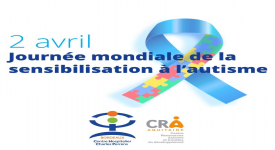The relationship between gamma-band neural oscillations and language skills in youth with Autism Spectrum Disorder and their first-degree relatives
Mol Autism. 2024 May 7;15(1):19. doi: 10.1186/s13229-024-00598-1.
ABSTRACT
BACKGROUND: Most children with Autism Spectrum Disorder (ASD) have co-occurring language impairments and some of these autism-specific language difficulties are also present in their non-autistic first-degree relatives. One of the possible neural mechanisms associated with variability in language functioning is alterations in cortical gamma-band oscillations, hypothesized to be related to neural excitation and inhibition balance.
METHODS: We used a high-density 128-channel electroencephalography (EEG) to register brain response to speech stimuli in a large sex-balanced sample of participants: 125 youth with ASD, 121 typically developing (TD) youth, and 40 unaffected siblings (US) of youth with ASD. Language skills were assessed with Clinical Evaluation of Language Fundamentals.
RESULTS: First, during speech processing, we identified significantly elevated gamma power in ASD participants compared to TD controls. Second, across all youth, higher gamma power was associated with lower language skills. Finally, the US group demonstrated an intermediate profile in both language and gamma power, with nonverbal IQ mediating the relationship between gamma power and language skills.
LIMITATIONS: We only focused on one of the possible neural contributors to variability in language functioning. Also, the US group consisted of a smaller number of participants in comparison to the ASD or TD groups. Finally, due to the timing issue in EEG system we have provided only non-phase-locked analysis.
CONCLUSIONS: Autistic youth showed elevated gamma power, suggesting higher excitation in the brain in response to speech stimuli and elevated gamma power was related to lower language skills. The US group showed an intermediate pattern of gamma activity, suggesting that the broader autism phenotype extends to neural profiles.
PMID:38711098 | DOI:10.1186/s13229-024-00598-1




